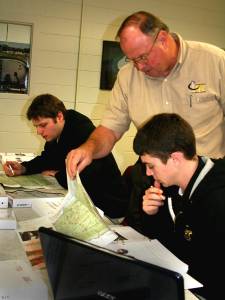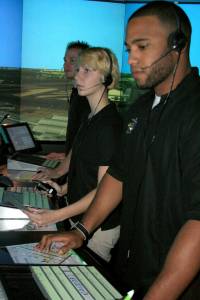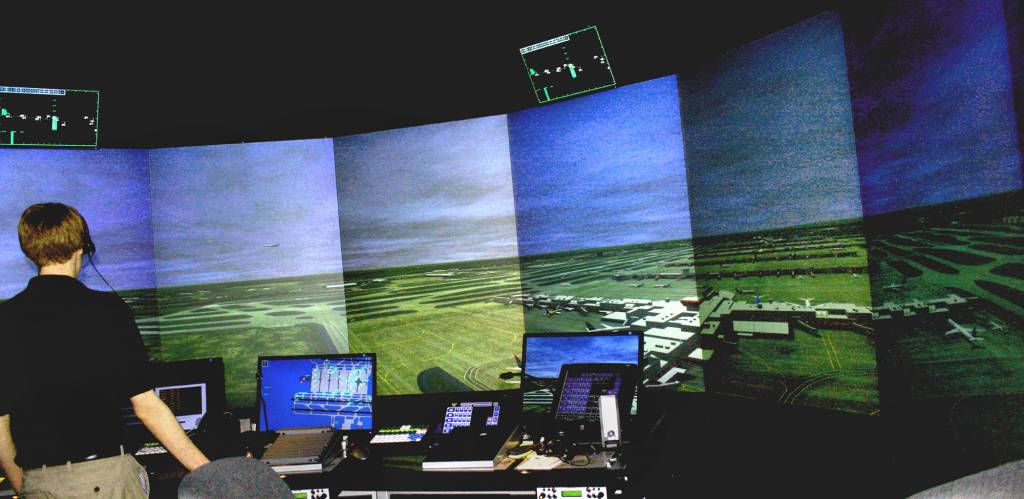 Overall the training program lasts 52 consecutive weeks (12 months). It consists of 3 phases. Training is broken down into Classroom Instruction, Tower Qualification Training (Live Traffic), and Advanced Simulation with Tower Proficiency Training. Upon successful completion of all three phases of training, the student will be evaluated to receive their Control Tower Operator (CTO) Certificate.
Overall the training program lasts 52 consecutive weeks (12 months). It consists of 3 phases. Training is broken down into Classroom Instruction, Tower Qualification Training (Live Traffic), and Advanced Simulation with Tower Proficiency Training. Upon successful completion of all three phases of training, the student will be evaluated to receive their Control Tower Operator (CTO) Certificate.
Phase 1: Classroom Instruction
This phase of training lasts approximately 12 weeks (3 months). It consists of air traffic basics including rules and regulations as well as preparation for live traffic training and tabletop simulation training. Training topics include basic ATC communications, weather requirements, aircraft recognition and characteristics, aeronautical charts, FAA orders and publications, approaches, navigation, emergencies, separation requirements, airspace, ATC equipment, strip marking, flight data/clearance delivery procedures, ground control procedures, local control procedures, and tower operations.
Phase 2: Tower Qualification Training
This phase of training lasts approximately 12 weeks (3 months) and will be started upon successful completion of Phase 1. It consists of Computer Based Instruction (CBI) Courses and Position Qualification Training at the Valdosta Regional Airport Control Tower. Students will qualify in Flight Data/Clearance Delivery, Ground Control, and Local Control. The instructor to student ratio is 1:1.
Phase 3: Advanced Simulation with Tower Proficiency Training
This phase of training lasts approximately 28 weeks (6 months) and will be started upon successful completion of Phase 2. It consists of a combination of Tower Proficiency Training and Advanced Simulation Training.
Tower Proficiency Training: Students will maintain proficiency on Flight Data/Clearance Delivery, Ground Control, and Local Control positions at the Valdosta Regional Airport Control Tower.
Advanced Simulation Training: Students receive simulation training on “state of the art” MaxSim ATC Simulators. The focus of this phase of training is to enhance the skill sets the student has developed in Phases 1 and 2 by training in airports with different levels of complexity and traffic volume, working up to ATC Level 12 (highest level) traffic. Students perform air traffic control procedures which involve runway operations, issuing clearances, IFR and VFR departure and arrival procedures and separation criteria, helicopter operations, wake turbulence requirements, parallel and crossing runways, emergency procedures, and unusual situations. Students will also receive basic radar simulation training.



Control Tower Operator (CTO) Certification
Upon successful completion of all 3 phases of training, the student will be evaluated by an FAA Examiner in accordance with FAR Part 65. This is a practical “over the shoulder” exam. When the student successfully demonstrates the ability to apply and perform air traffic control procedures, the examiner will issue the student a Control Tower Operator Certificate with Facility Rating. The student is then certified by the FAA.

** Supplemental instruction is unlimited, and one-on-one tutoring is available at no extra charge as long as attendance requirements are met.
